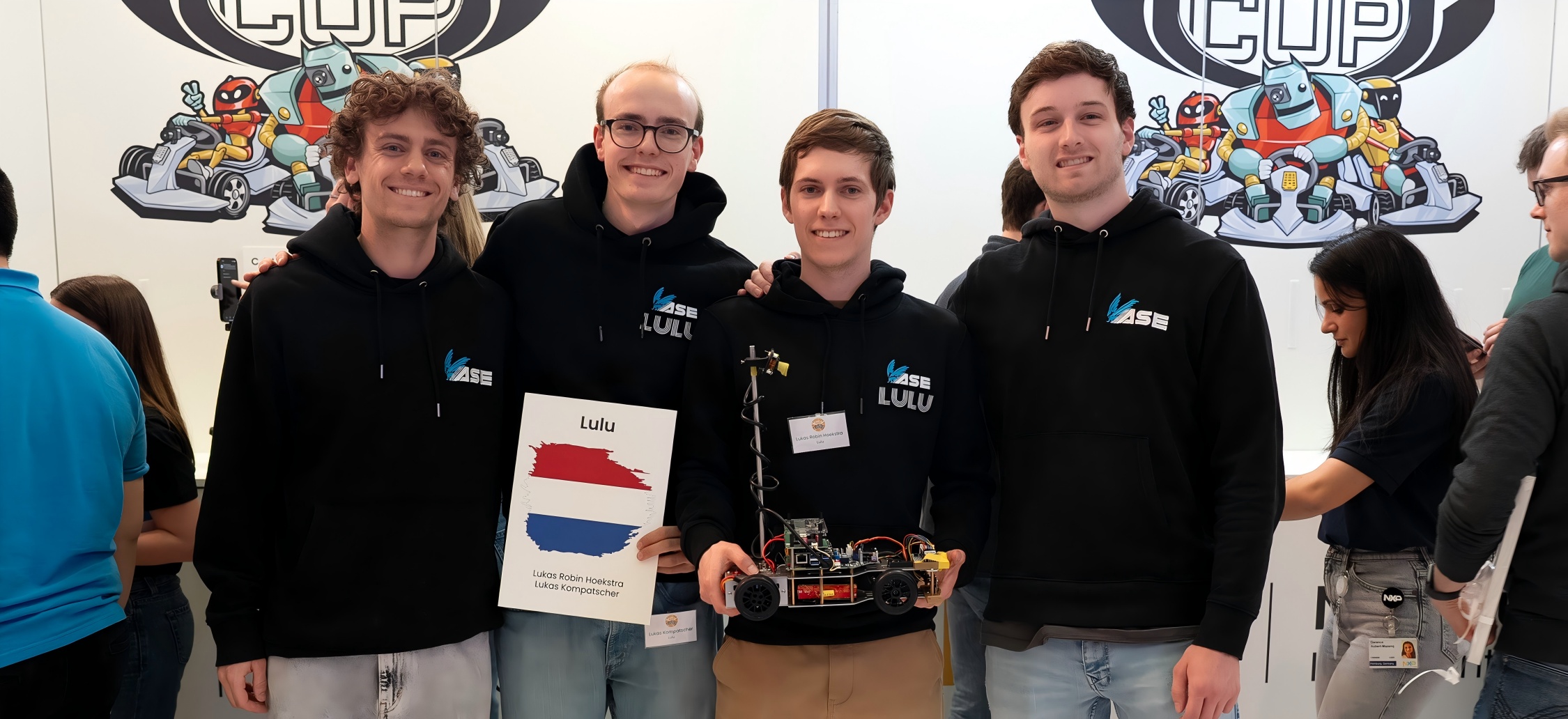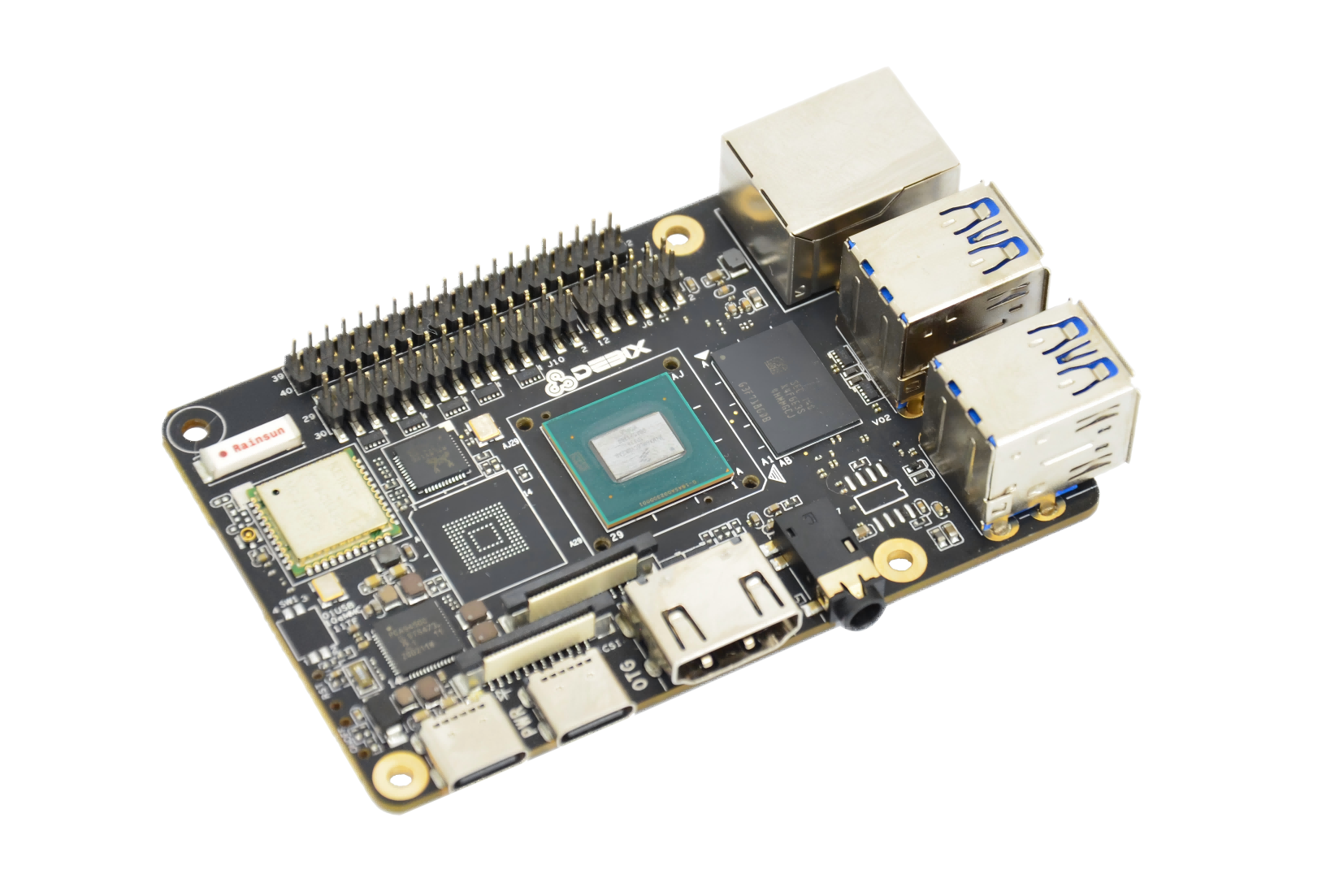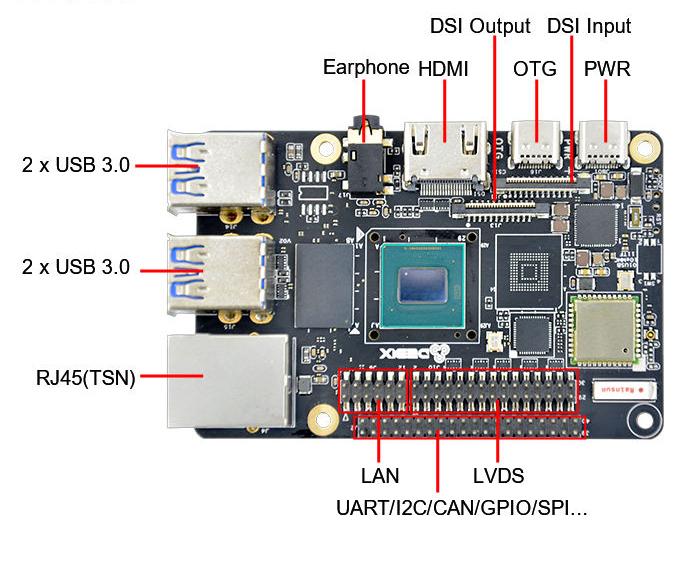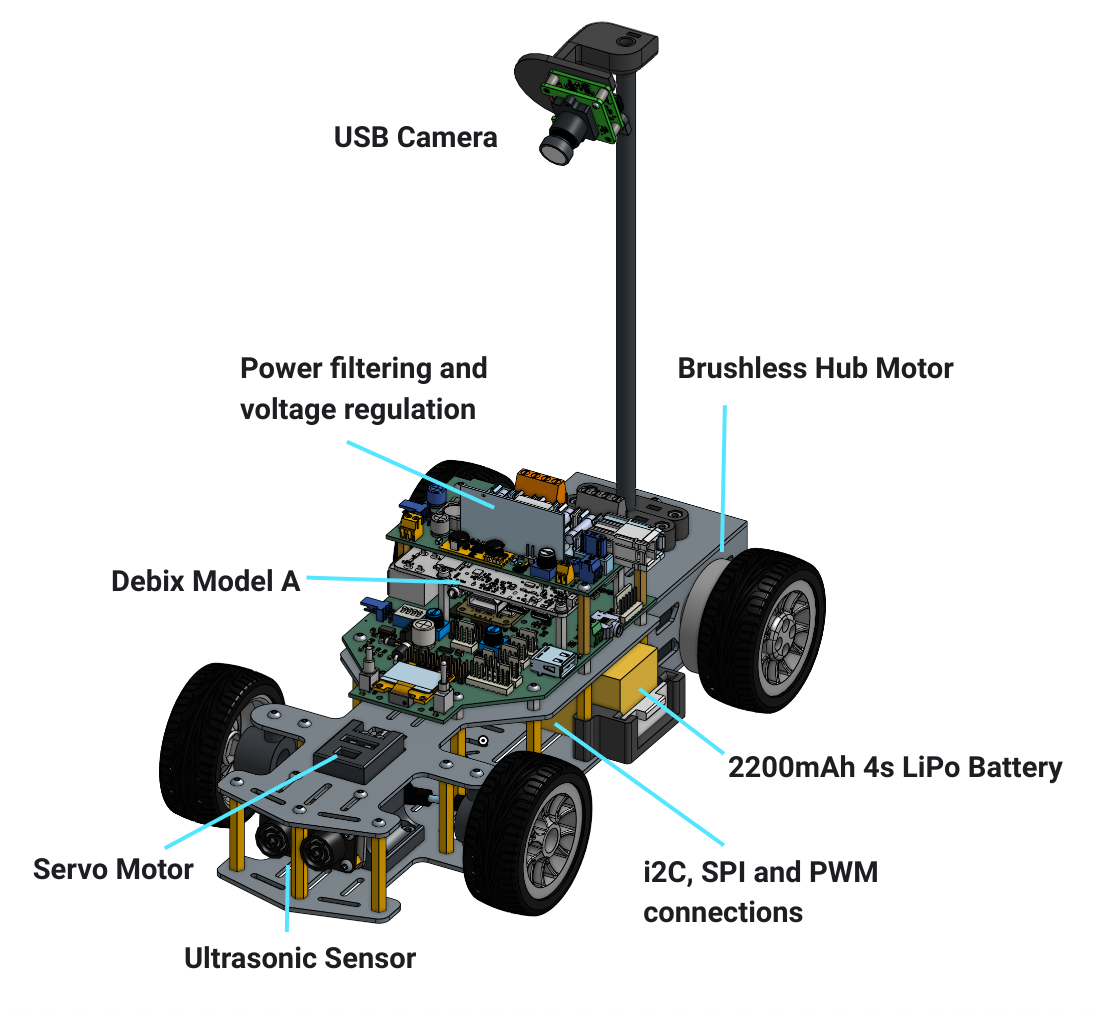Powering Innovation: DEBIX Model A Drives VU ASE's Autonomous Race Car in NXP Cup
We're thrilled to shine a spotlight on Team LuLu from VU ASE, a standout participant in this year's NXP Cup, who leveraged the power of the DEBIX Model A SBC to build their autonomous race car. Their innovative approach and the integral role of DEBIX in their success are truly inspiring.

DEBIX: The Brains of the Operation
Team LuLu chose the DEBIX Model A SBC as the "brain" of their Rover, a decision that proved pivotal for their autonomous race car. This versatile Linux-based Single-Board Computer, with its 8GB of memory and dedicated NPU, offered the flexibility and ease of programming essential for running the complex ASE Software framework.
Moving away from traditional micro-controllers, the team embraced the DEBIX Model A to tap into the rich software development ecosystem that Linux supports. This strategic choice opened doors to virtually any application, freeing students from the constraints of embedded programming and allowing them to focus on higher-level innovation. DEBIX even provided a pre-configured Ubuntu installation, streamlining their development process.


Seamless Integration and Interconnectivity
The DEBIX Model A's robust interconnectivity was a game-changer for Team LuLu. Its ability to make conventional and industry-standard sensors plug-and-play simplified the integration of USB devices like high FPS cameras.

The team designed a custom carrier board that exposed the DEBIX's 40-pin GPIO header, allowing for convenient use and expansion. Key integrations included:
I2C Devices: Two separate I2C devices were utilized for precise control of actuators and efficient data acquisition from sensors.
Debugging: An extension of the console port via a headphone jack connector enabled easy debugging of Wi-Fi connectivity issues.
User Interface: Extended power and reset buttons, along with a GPIO expander for LEDs and a push button, facilitated the selection of different "race modes" during the NXP race, where wireless communication is prohibited.
Power Monitoring: An additional ADC and voltage sensor were added to accurately monitor the battery voltage.
High-Speed Cameras: USB connections were exclusively used for high FPS USB cameras, crucial for real-time perception.
Wireless Development: The onboard Wi-Fi connection was arguably the most critical element, enabling fast iteration loops for code development and live monitoring of the vehicle while driving. This networking capability was fundamental to their software, even allowing them to build a user interface for live vehicle monitoring, as shown in this video: https://www.youtube.com/watch?v=CZuFpnBwopQ.
Overcoming Challenges with DEBIX
While the primary hardware development challenges revolved around mechanical and electrical design for a powerful yet student-friendly Rover, the compact form-factor of the DEBIX Model A ensured seamless integration onto the carrier board.
During software development, Team LuLu found that the DEBIX Model A's computational power was more than sufficient. The non-AI algorithm running on the winning Rover of 2024 did not even push the CPU or RAM limits, negating the immediate need for AI algorithms on the NPU. This highlights the ample headroom and capabilities of the DEBIX board for demanding autonomous applications.
A Strong Finish
Team LuLu proudly secured 7th place in the NXP Cup competition, a testament to their hard work, ingenuity, and the reliable performance of the DEBIX Model A 8GB SBC at the heart of their autonomous race car.
We congratulate Team LuLu from VU ASE on their impressive achievement and look forward to seeing how DEBIX Industrial Computers continue to empower the next generation of engineers and innovators!












